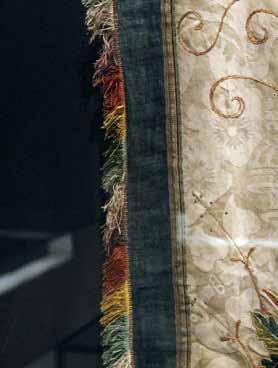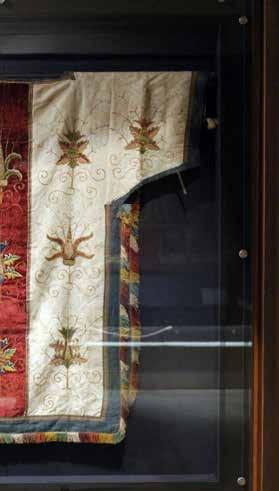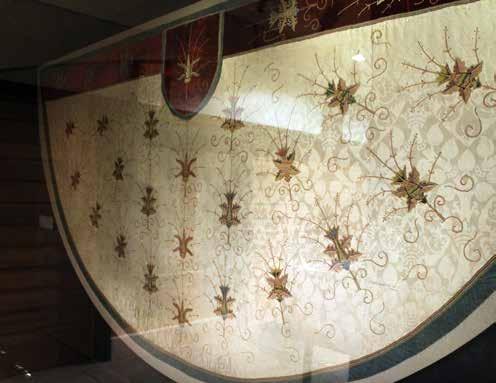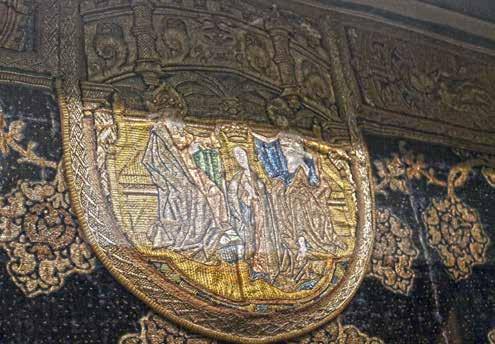
3 minute read
15
from Oremus October 2020
Fr John Scott
The College of St John the Baptist was founded in 1555 by Sir Thomas White, a wealthy London merchant tailor. It took over the premises of St Bernard's College, founded in 1437 by Henry Chichele, Archbishop of Canterbury, for Cistercian monks studying at Oxford University. The College had been suppressed at the Dissolution of the Monasteries in 1536, and in 1546 the buildings were granted by Henry VIII to his own new collegiate foundation, Christ Church. It was from Christ Church that Thomas White bought the buildings and land to the east of them. The first members of the new College took up residence in 1557. White was Master of the Merchant Taylors' Company, one of the City livery companies, and he established several educational foundations including the Merchant Taylors' schools. Most medieval colleges had been established by churchmen: St John’s was the first in Oxford to be founded by a merchant, and one who was committed to the old Faith. It can also claim two prominent martyrs amongst its former Fellows: Ss Cuthbert Mayne and Edmund Campion SJ
It must have been a blow to White to witness the death of Queen Mary and the accession of Elizabeth, with the establishment of the Protestant Church of England, before he himself died. That, of course, is a story repeated countless times in that unhappy period, although White’s College went on to thrive, not least through shrewd endowment in its early days, and continues to do so. However, St John’s holds some precious survivals from its foundation in the form of 15th and 16th-century ecclesiastical fabrics, many of them plausibly provided for the use of the new College’s chapel. These have become known as the ‘Laudian vestments’, named after William Laud, Archbishop of Canterbury (1633 – 1645), who had been President of the College for 10 years from 1611. To be termed ‘Laudian’ was not generally a term of praise; Laud was noted for high-handed Anglican High Churchmanship, for which he suffered by execution from which King Charles I was not able to save him.


There are no shoulder seams on the dalmatics, which means that the pattern of the fabric appears the right way up on one side of the vestment and upside down (visible here) on the other. Were the 16th-century clergy of St John’s always careful about getting front and back the right way round?
The College Chapel has a small side chapel containing memorials to deceased Presidents and Fellows of the College, as well as a delightful fan-vaulted ceiling. The altar has a frontal, clearly made from an old cope, featuring a crucifixion scene surrounded by bells, angels and decorative motifs.
Central to the Collection are three pieces from a High Mass set. It seems that all the smaller pieces – stoles, maniples, burse and chalice veil – have disappeared, as well as, sadly, the chasuble. What remains are two satin dalmatics and a cope. As is often the case, the dalmatics are identical, although the one worn by the Sub-Deacon would be termed a tunicle.


The cope of the set eschews biblical or ecclesiastical imagery in favour of decorative motif, set against the large pattern of the main fabric.

A second cope, however, whilst utilizing a very strongly-contrasted dark blue and gold pattern for its body, has orphreys with images of saints and, on its hood, the Father and the Son crowning Our Lady as Queen of Heaven.

It is only in more recent years that the Collection has been put on display by St John’s, the present arrangements being two hours on a term-time Saturday afternoon three times a year. Fr John, himself an alumnus of the College, and Richard Hawker, the Cathedral’s Head Sacristan, travelled to Oxford for the display in March. Whilst the vestments are admirably conserved in temperaturecontrolled conditions under glass, this, combined with low lighting, rendered photography rather frustrating; the reader’s indulgence is requested!









